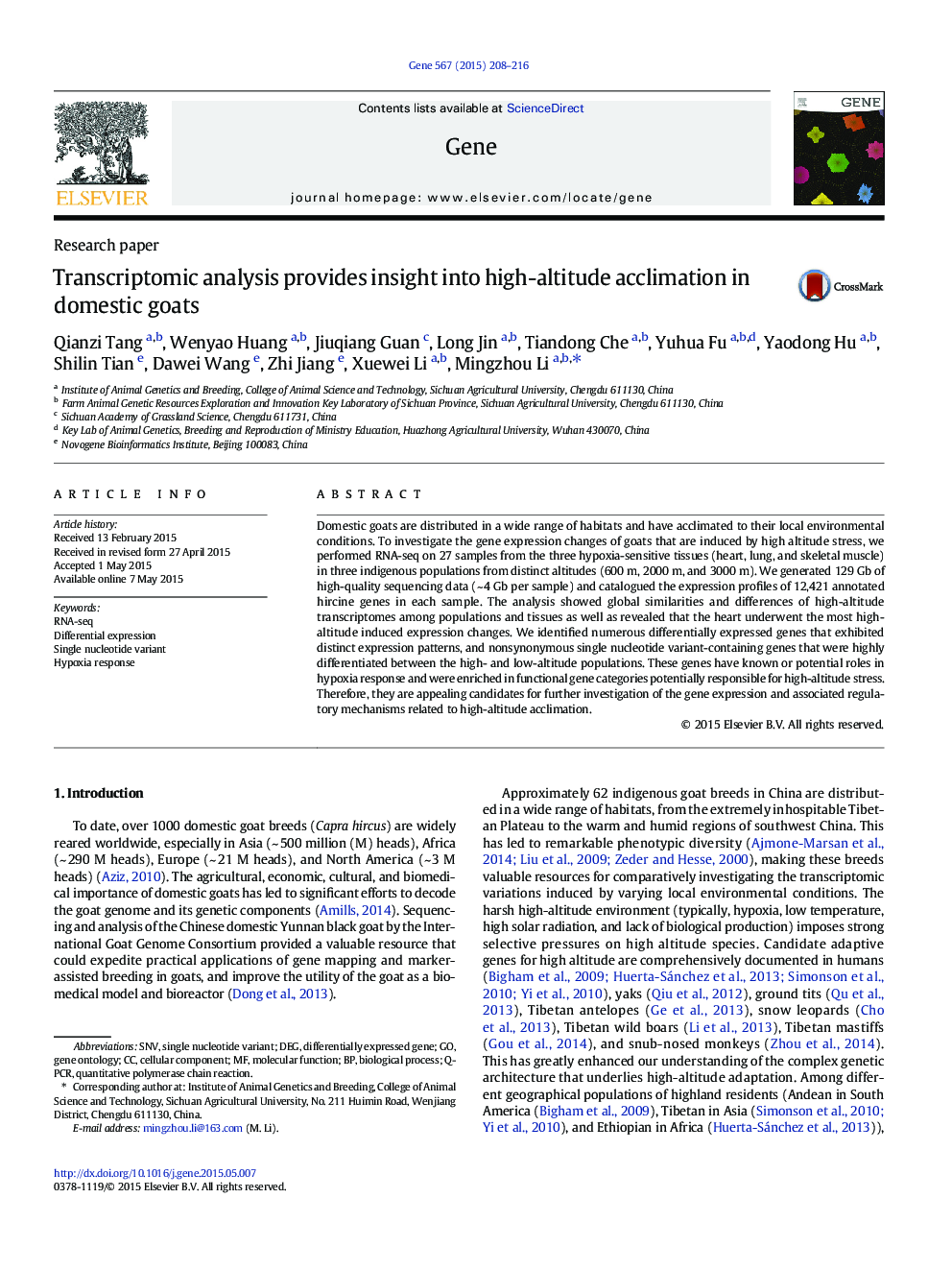| Article ID | Journal | Published Year | Pages | File Type |
|---|---|---|---|---|
| 2815651 | Gene | 2015 | 9 Pages |
•We analyzed the goat transcriptomes of hypoxia-related tissues from three altitudes.•We identified global similarities and differences of high-altitude transcriptomes.•We identified differentially expressed genes between different altitudes.•We identified genes differentiated between the high- and low-altitude populations.•The detected hypoxia-related genes are likely the result of high-altitude acclimation.
Domestic goats are distributed in a wide range of habitats and have acclimated to their local environmental conditions. To investigate the gene expression changes of goats that are induced by high altitude stress, we performed RNA-seq on 27 samples from the three hypoxia-sensitive tissues (heart, lung, and skeletal muscle) in three indigenous populations from distinct altitudes (600 m, 2000 m, and 3000 m). We generated 129 Gb of high-quality sequencing data (~ 4 Gb per sample) and catalogued the expression profiles of 12,421 annotated hircine genes in each sample. The analysis showed global similarities and differences of high-altitude transcriptomes among populations and tissues as well as revealed that the heart underwent the most high-altitude induced expression changes. We identified numerous differentially expressed genes that exhibited distinct expression patterns, and nonsynonymous single nucleotide variant-containing genes that were highly differentiated between the high- and low-altitude populations. These genes have known or potential roles in hypoxia response and were enriched in functional gene categories potentially responsible for high-altitude stress. Therefore, they are appealing candidates for further investigation of the gene expression and associated regulatory mechanisms related to high-altitude acclimation.
